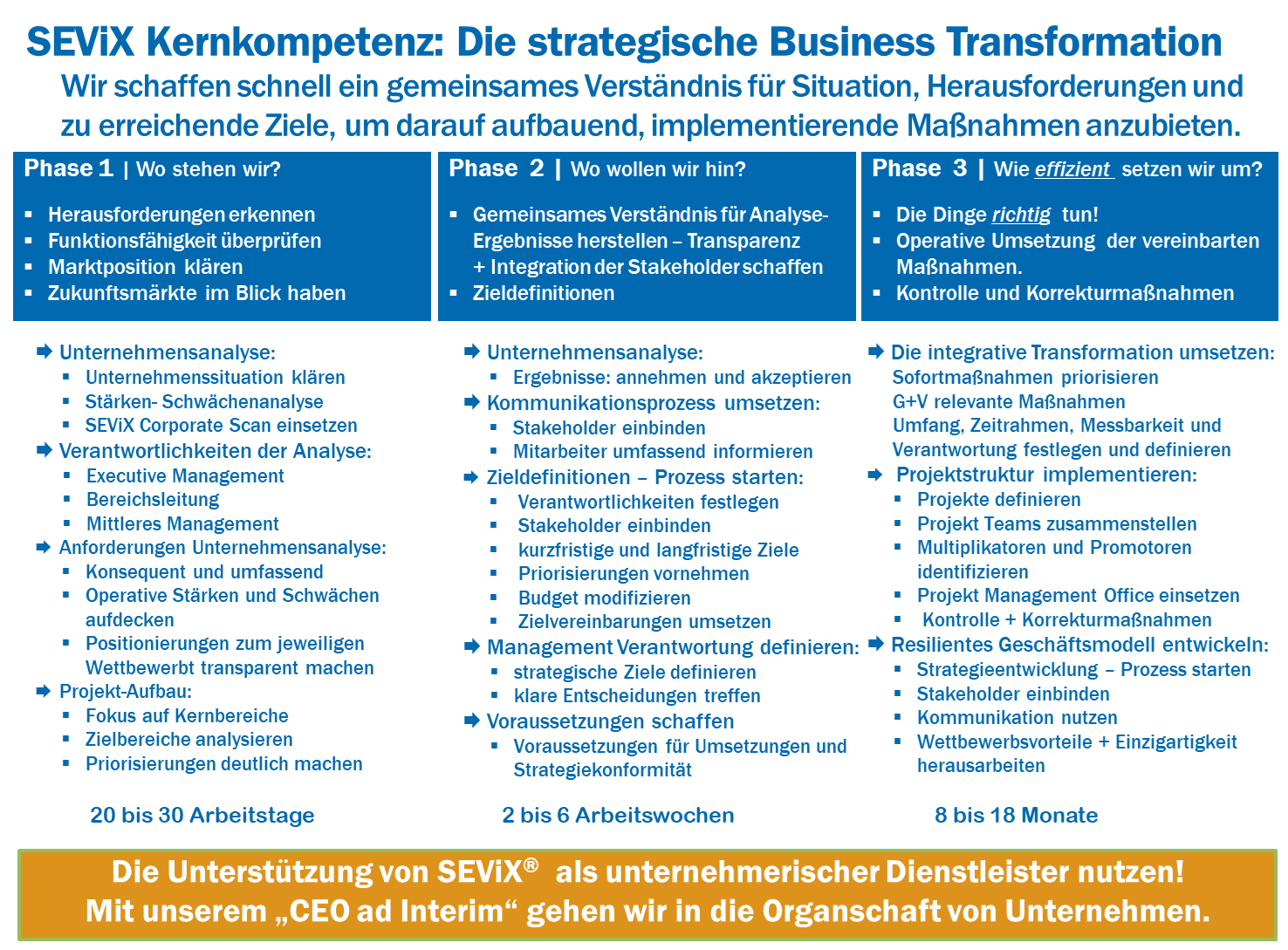In addition to restoring urgent functionality that can be realized in the short term, Corona NOW also forces every company to think seriously about its future and long-term direction. A strategic business transformation is indispensable here.
Preface to the three-phase model
Corona presents new challenges to our entire economic system and nearly all businesses. Employees must be screened for symptoms, offices must be reconfigured to eliminate shared equipment and close down space, and policies must be changed to address everything from liability issues to crisis management. Companies need to act quickly on multiple fronts. Business owners should prioritize who needs to be on site. Maintaining or expanding the work from home home office can provide additional time and space to make the necessary adjustments. Make it a point to have remote teams achieve higher levels of growth and productivity than on-site teams.
After that, companies will have to deal with how to get out of crisis mode as quickly as possible with as little damage as possible and a clear perspective for continuation. To do this, it will first be necessary to start up all the companies' activities and become functional again. To this end, a large number of operational measures must be implemented, some of which are also used in classic restructuring. An essential prerequisite and indispensable condition for the implementation of all measures without exception is a comprehensive situation analysis. All areas must provide reliable answers regarding future viability, stability, competitiveness and market development. These must be put to the test. Questions must also be answered comprehensively by the decision-makers as to whether the industry is in shrinking, stagnating or growing markets.
On the other hand, Corona also offers opportunities. In addition to restoring urgent functionality that can be realized in the short term, Corona NOW forces every company to think seriously about its future and long-term direction. A strategic business transformation is indispensable here.
Companies that miss this opportunity will have to make room for those that have the necessary anticipatory capabilities.
Strategic business transformation is about making fundamental changes in companies to put them in a better market position - especially in industries with significant growth prospects - and to align them profitably in the long term. In order to achieve functional capability and strategic realignment with a resilient business model, mostly short-term goals of functional capability must be reconciled with mostly long-term goals of profitability with measures required in each case. How this can be achieved is described below in three phases. This is essentially a matter of principle, but without any claim to completeness. In every company, the prerequisites and priorities may be different, such as prioritized solutions for immediate liquidity problems or immediately viable solutions for alternative suppliers with simultaneous prioritization of a strategy development process to be implemented.
Phase I - comprehensive situation analysis
Phase II - Definition of goals, priorities and creation of conditions for achieving goals
Phase III - Implementation of measures and projects and control
We will discuss Phases I through III in more detail in separate articles in the next three SEViX Newsletters.





0 Comments